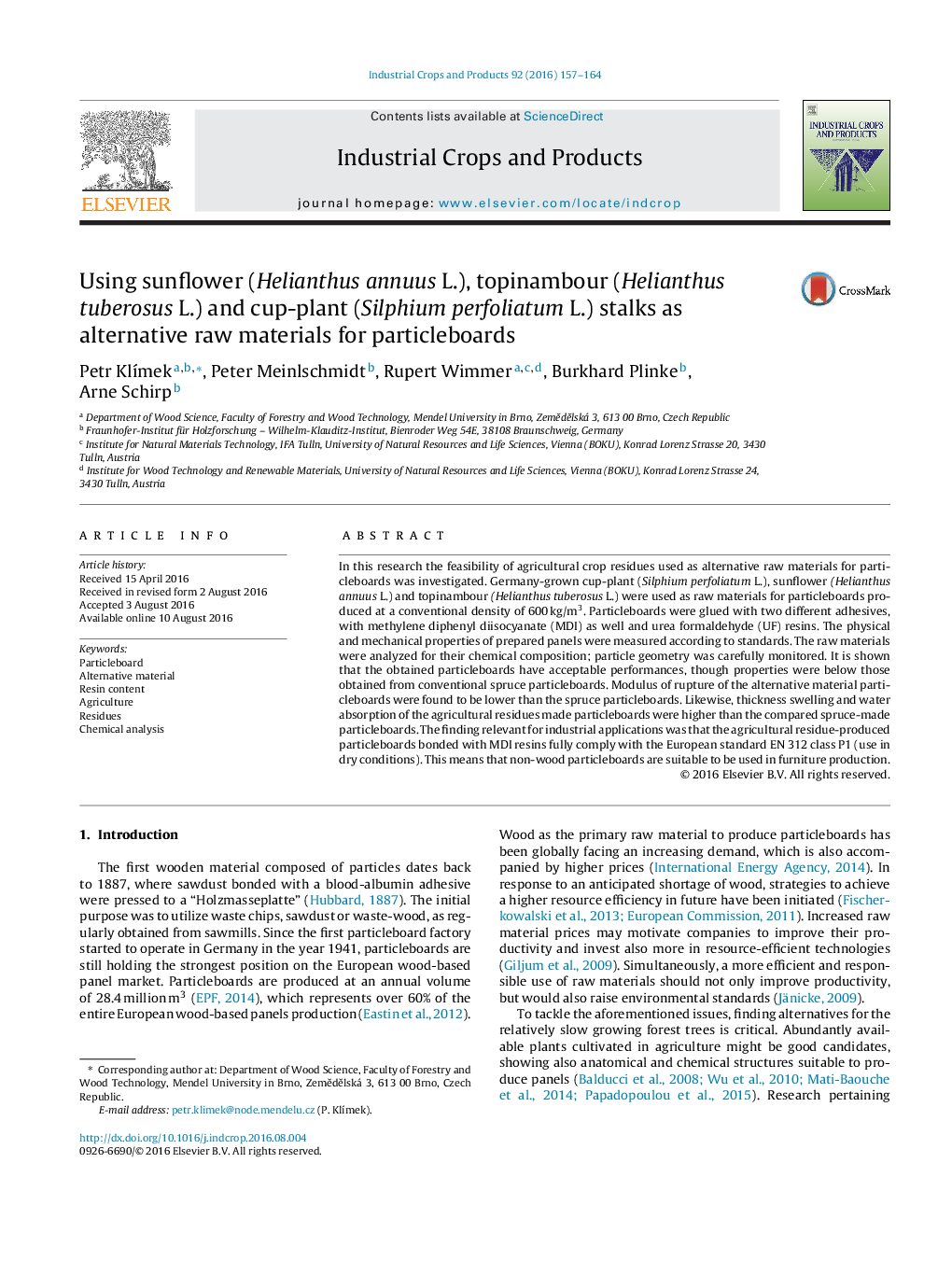| کد مقاله | کد نشریه | سال انتشار | مقاله انگلیسی | نسخه تمام متن |
|---|---|---|---|---|
| 4512044 | 1624818 | 2016 | 8 صفحه PDF | دانلود رایگان |

• Particleboards from sunflower, topinambour and cup-plant stalks are investigated.
• Particles used in production are specified by their geometry descriptors.
• The content of cellulose, hemicellulose and lignin of raw materials is specified.
• The effect of MDI and UF resin on the properties of the particleboards is measured.
• Investigated particleboards bonded by MDI resin meets minimal requirements of EN312.
In this research the feasibility of agricultural crop residues used as alternative raw materials for particleboards was investigated. Germany-grown cup-plant (Silphium perfoliatum L.), sunflower (Helianthus annuus L.) and topinambour (Helianthus tuberosus L.) were used as raw materials for particleboards produced at a conventional density of 600 kg/m3. Particleboards were glued with two different adhesives, with methylene diphenyl diisocyanate (MDI) as well and urea formaldehyde (UF) resins. The physical and mechanical properties of prepared panels were measured according to standards. The raw materials were analyzed for their chemical composition; particle geometry was carefully monitored. It is shown that the obtained particleboards have acceptable performances, though properties were below those obtained from conventional spruce particleboards. Modulus of rupture of the alternative material particleboards were found to be lower than the spruce particleboards. Likewise, thickness swelling and water absorption of the agricultural residues made particleboards were higher than the compared spruce-made particleboards. The finding relevant for industrial applications was that the agricultural residue-produced particleboards bonded with MDI resins fully comply with the European standard EN 312 class P1 (use in dry conditions). This means that non-wood particleboards are suitable to be used in furniture production.
Figure optionsDownload as PowerPoint slide
Journal: Industrial Crops and Products - Volume 92, 15 December 2016, Pages 157–164